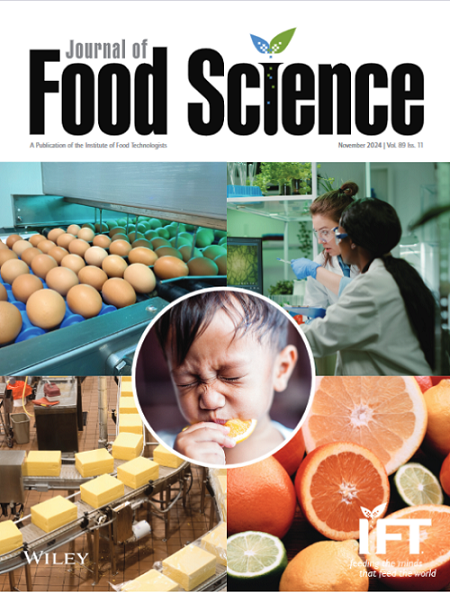Process Optimization and Storage Evaluation of Explosion Puffing Dried Reduced-Fat White Cheese Snacks
Abstract
ABSTRACT
This study builds on the previous research that explored the effects of different pre-drying methods on the quality of reduced-fat white cheese (RFWC) snacks before explosion puffing drying (EPD). The microwave + freeze hybrid drying (MD + FD) method was identified as the optimal pre-drying approach, with a target moisture content of 45 g/100 g in the RFWC sample, based on textural, chemical, color, and sensory attributes. In this continuation study, the MD + FD pre-drying method and moisture content were maintained, whereas response surface methodology (RSM) with a Box–Behnken design was applied to optimize the EPD process parameters for producing high-protein RFWC snacks. The independent variables (puffing temperature, puffing time, and vacuum temperature) were evaluated for their effects on protein content, crispness, volumetric expansion, and sensory acceptability. Statistical analysis showed that vacuum temperature significantly influenced all responses; puffing time played a key role in protein content and crispness, whereas puffing temperature primarily affected volumetric expansion. The optimal EPD conditions were determined as 100°C puffing temperature, 5 min puffing time, and 60°C vacuum temperature, yielding a protein content of 60.33 g/100 g DM, crispness of 34.40, volumetric expansion of 16.60%, and an overall sensory score of 7.46. A 6-month storage study revealed that the product retained its quality for 4 months, with noticeable moisture uptake, oxidation, and texture degradation from the fifth month onward. These findings highlight EPD's potential for developing high-protein, crispy cheese snacks while underscoring the importance of selecting appropriate packaging to maintain product stability.
Practical Applications
By showing that explosion puffing drying (EPD) can be tuned to produce crispy, protein-rich cheese snacks with exceptional texture and sensory appeal, this work contributes to the invention of high-protein snacks. The findings provide the food industry a scalable way to create nutrient-dense, shelf-stable treats that are not manufactured with conventional grains. Additionally, the 6-month storage analysis provides important information on packaging techniques to increase shelf life, increasing the viability of these snacks for mass manufacture and international distribution. The new generation of clean-label, high-protein snacks in the quickly expanding health-conscious market is made possible by our research.


 求助内容:
求助内容: 应助结果提醒方式:
应助结果提醒方式:


